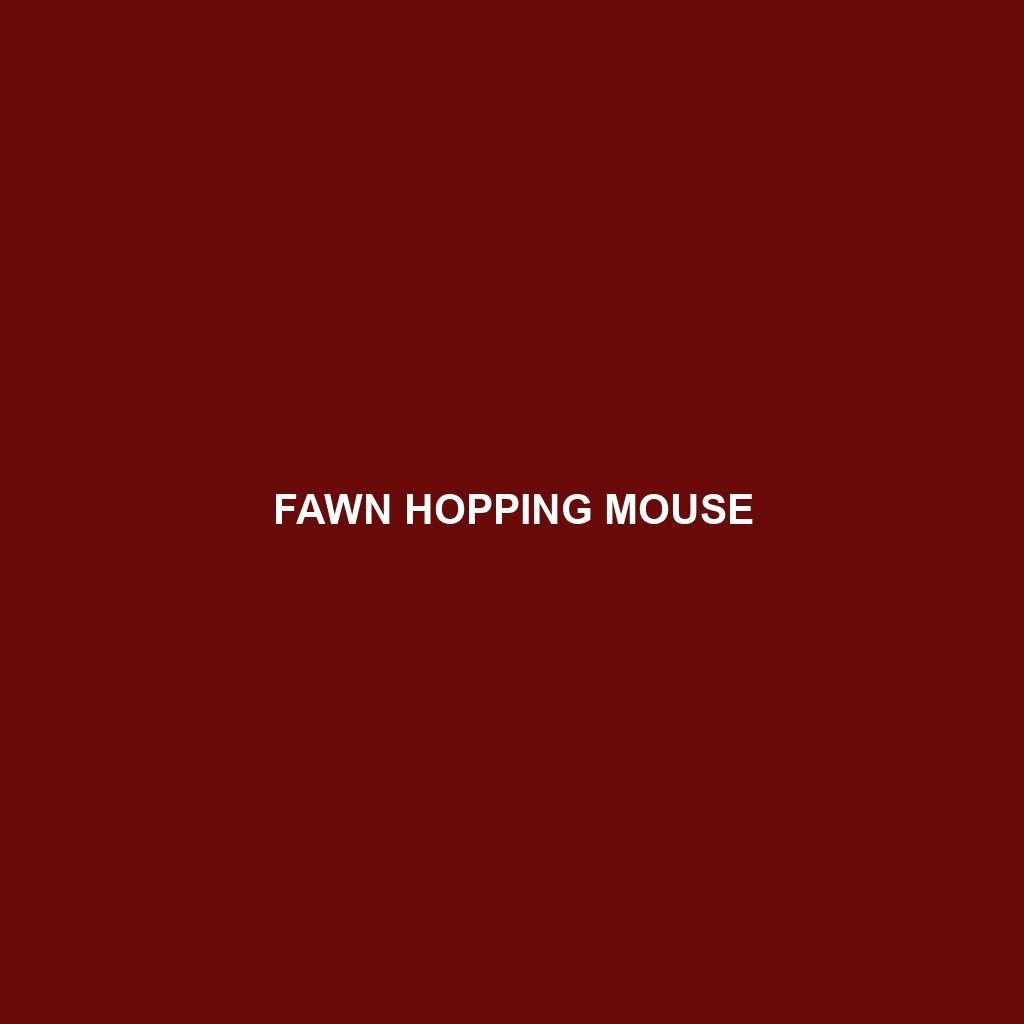Fawn Hopping Mouse
Common Name: Fawn Hopping Mouse
Scientific Name: Notomys cervinus
Habitat
The Fawn Hopping Mouse is primarily found in the arid regions of central and western Australia. This species thrives in sandy and spinifex grasslands, as well as in sparse woodlands with a dense undergrowth. Its preference for dry, open environments makes these habitats crucial for its survival, as they offer both shelter and feeding opportunities.
Physical Characteristics
Measuring between 10 to 12 centimeters in body length, the Fawn Hopping Mouse exhibits a slender build with long hind legs, which are adapted for remarkable jumping abilities. Its fur is typically a light fawn color, allowing it to blend into its sandy habitat. The mouse has large ears and big eyes, which enhance its ability to detect predators. Its tails are almost as long as its body, aiding in balance during its agile movements.
Behavior
This nocturnal species is known for its unique hopping locomotion, which allows it to evade predators such as snakes and birds of prey. Fawn Hopping Mice are highly social animals, often found in small colonies. They exhibit intriguing burrowing behaviors, digging extensive tunnels where they seek refuge during the day and store food. Their communication includes various vocalizations and scent markings to establish territory and social bonds.
Diet
Fawn Hopping Mice have an omnivorous diet that primarily consists of seeds, grains, and vegetation. They also consume insects when available. Their feeding habits are adapted to their arid environment, where they forage during the night to avoid daytime heat. Understanding their diet is essential, as it influences their habitat choice and overall health.
Reproduction
This species generally breeds during the warmer months, with mating occurring from late spring to early fall. Females typically give birth to litters of two to four young after a gestation period of about 30 days. The offspring are born blind and helpless, relying heavily on their mother for nourishment and warmth in their early weeks. Parental care is significant, with mothers often moving their young to different burrows to keep them safe from predators.
Conservation Status
The Fawn Hopping Mouse is currently listed as vulnerable due to habitat loss, predation by introduced species, and changing environmental conditions. Conservation efforts focus on habitat preservation and the control of non-native species that threaten its population.
Interesting Facts
Did you know that the Fawn Hopping Mouse can jump up to three times its body length? This incredible leaping ability not only aids in escaping threats but also allows it to traverse its sandy habitat more efficiently. Additionally, these mice can go for long periods without water, deriving moisture from the food they consume.
Role in Ecosystem
The Fawn Hopping Mouse plays a vital role in its ecosystem as both a seed disperser and a prey species. By feeding on various seeds and insects, it helps facilitate plant growth and maintains the balance within its habitat. Its presence supports the food web, providing sustenance to predators while contributing to soil aeration through its burrowing behaviors.
